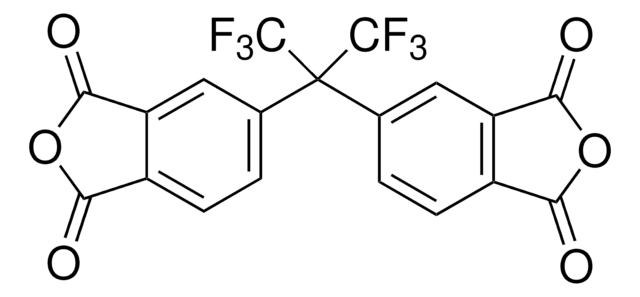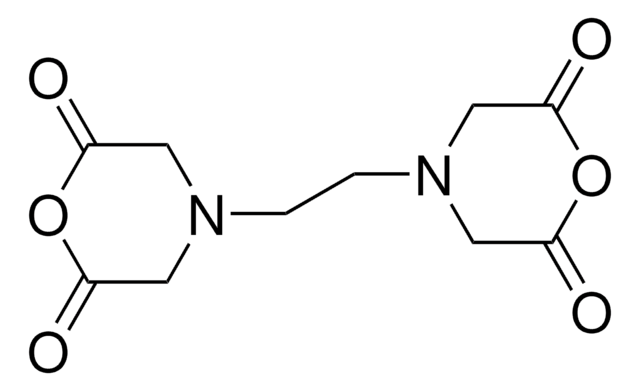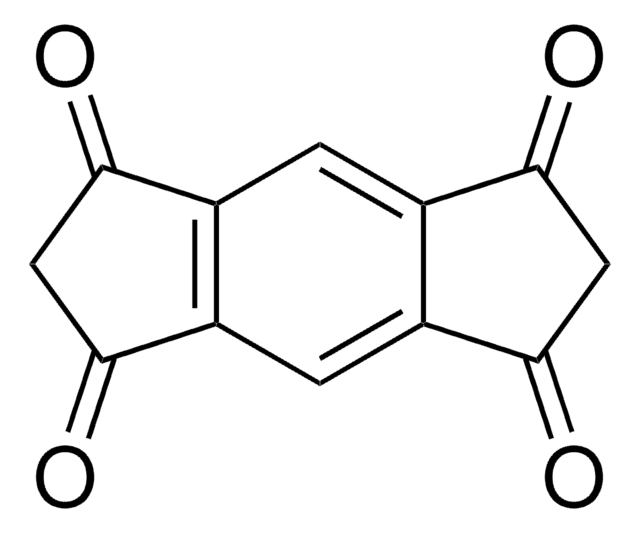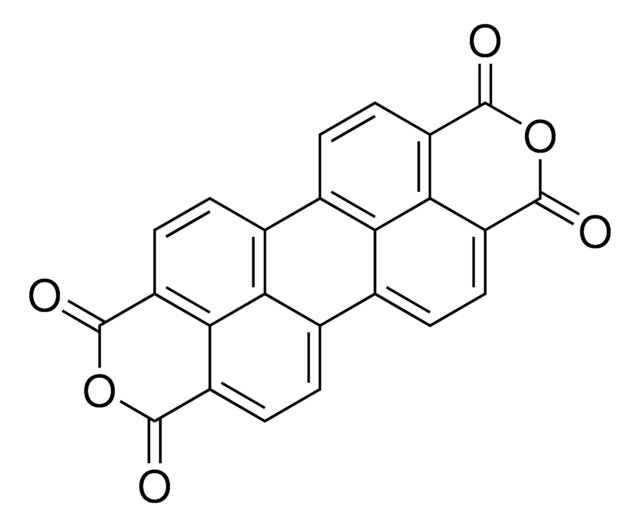추천 제품
Quality Level
분석
97%
양식
powder
bp
397-400 °C (lit.)
mp
283-286 °C (lit.)
SMILES string
O=C1OC(=O)c2cc3C(=O)OC(=O)c3cc12
InChI
1S/C10H2O6/c11-7-3-1-4-6(10(14)16-8(4)12)2-5(3)9(13)15-7/h1-2H
InChI key
ANSXAPJVJOKRDJ-UHFFFAOYSA-N
유사한 제품을 찾으십니까? 방문 제품 비교 안내
일반 설명
Pyromellitic dianhydride is a dianhydride class of monomers commonly used in the preparation of polyimides polymers which are used in aerospace, electronics, and automotive industries because of their excellent thermal stability, high mechanical strength, and inherent flame resistance. It is also used in the synthesis of thermoplastic polymers such as polyesters and polyethers, as well as plasticizers and epoxy resins. Additionally, PMDA serves as a curing agent for epoxy resins. Epoxy resins are widely used in adhesives, coatings, composites, and electrical insulation materials.
Pyromellitic dianhydride (PMDA) is an acidic anhydride that can be used as a repair agent and as a chain extender in the formation of polyethylene terephthalate (PET) based chain extensions. It is mainly used in the production of thermoplastics and other coating applications.
Pyromellitic dianhydride (PMDA) is an acidic anhydride that can be used as a repair agent and as a chain extender in the formation of polyethylene terephthalate (PET) based chain extensions. It is mainly used in the production of thermoplastics and other coating applications.
애플리케이션
PMDA can be used as:
- A monomer to synthesize aromatic polyimides with excellent thermo-mechanical and chemical properties. These polymers find the applications in automotive and electronic industries.
- A capping agent in the development of siloxane-based hybrid materials for potential usage in organic electronics.
- A monomer in the preparation and modification of thin film composite membranes, which are used in water purification, gas separation, and biomedical devices.
- A monomer in the synthesis of pyromellitic diimide-based copolymers as stable cathode active materials for lithium and sodium-ion batteries.
신호어
Danger
유해 및 위험 성명서
Hazard Classifications
Eye Dam. 1 - Resp. Sens. 1 - Skin Sens. 1
Storage Class Code
11 - Combustible Solids
WGK
WGK 1
Flash Point (°F)
716.0 °F - closed cup
Flash Point (°C)
380 °C - closed cup
개인 보호 장비
dust mask type N95 (US), Eyeshields, Faceshields, Gloves
이미 열람한 고객
Jiemin Wang et al.
ACS nano, 13(7), 7860-7870 (2019-06-14)
Conventional three-dimensional (3D) thermal conductors or heat sinks are normally bulky solids with high density, which is cumbersome and not portable to satisfy current demands for soft and flexible electronic devices. To address this issue, here, a lightweight, superelastic yet
Junsheng Liu et al.
Journal of hazardous materials, 178(1-3), 1021-1029 (2010-03-13)
A series of zwitterionic hybrid polymers were prepared from the ring-opening polymerization of pyromellitic acid dianhydride (PMDA) and phenylaminomethyl trimethoxysilane (PAMTMS), and a subsequent sol-gel process. FTIR spectra confirmed the step products. TGA analysis showed that the thermal degradation temperature
Heeseok Song et al.
Polymers, 11(3) (2019-04-10)
In this study, thermally conductive composite films were fabricated using an anisotropic boron nitride (BN) and hybrid filler system mixed with spherical aluminum nitride (AlN) or aluminum oxide (Al₂O₃) particles in a polyimide matrix. The hybrid system yielded a decrease
Yuta Nabae et al.
Scientific reports, 6, 23276-23276 (2016-03-19)
The development of a non-precious metal (NPM) fuel cell catalyst is extremely important to achieve globalization of polymer electrolyte fuel cells due to the cost and scarcity of platinum. Here, we report on a NPM cathode catalyst prepared by the
Claudio Cecone et al.
Molecules (Basel, Switzerland), 23(7) (2018-07-13)
Electrospun beta-cyclodextrin (βCD)-based polymers can combine a high surface-to-volume ratio and a high loading/controlled-release-system potential. In this work, pyromellitic dianhydride (PMDA)/βCD-based nanosponge microfibers were used to study the capability to host a common insect repellent (N,N-diethyl-3-toluamide (DEET)) and to monitor
자사의 과학자팀은 생명 과학, 재료 과학, 화학 합성, 크로마토그래피, 분석 및 기타 많은 영역을 포함한 모든 과학 분야에 경험이 있습니다..
고객지원팀으로 연락바랍니다.
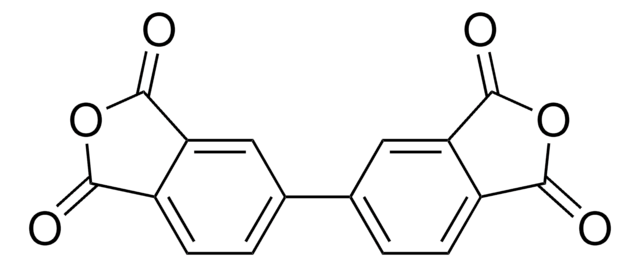
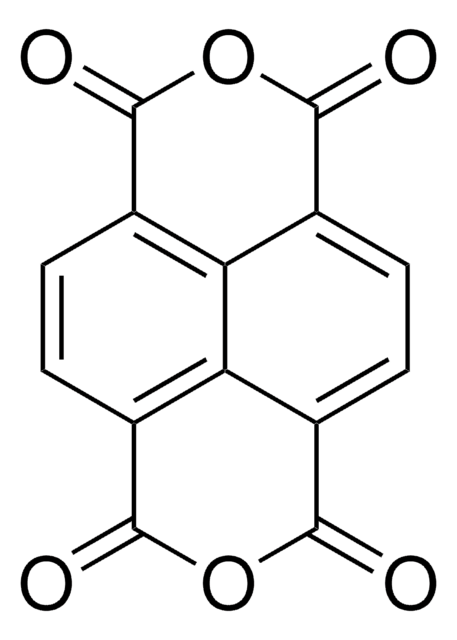

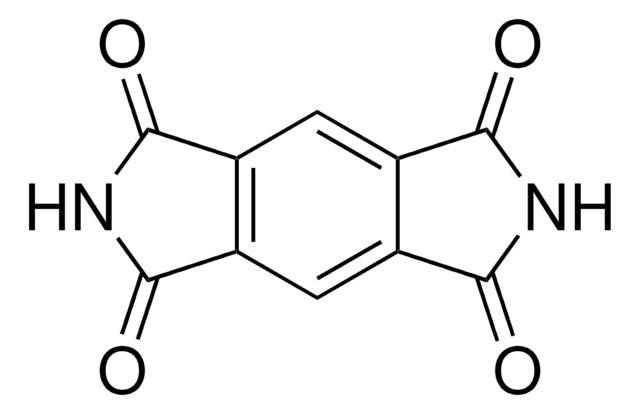
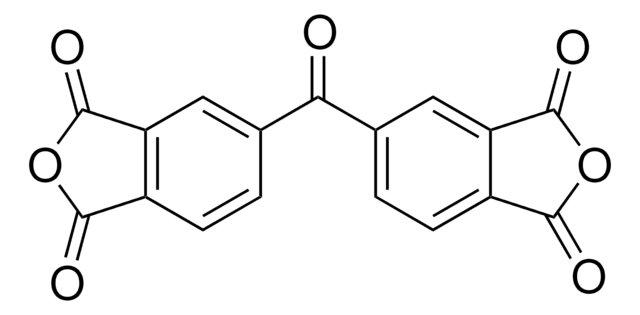
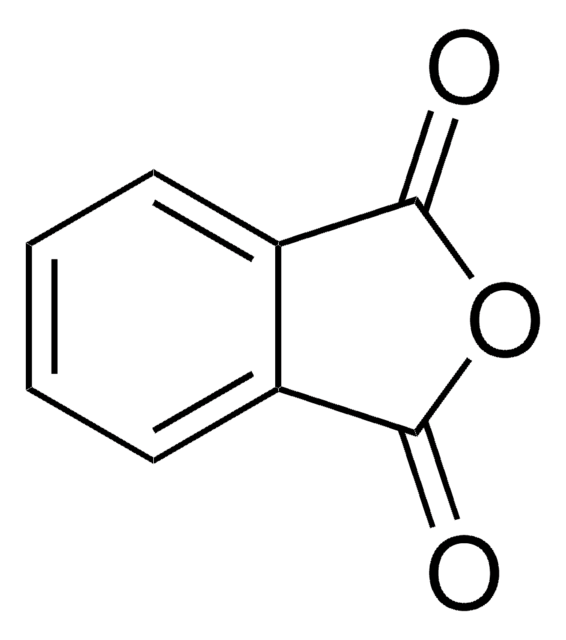
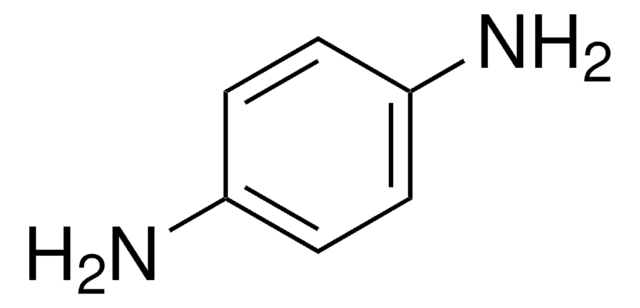
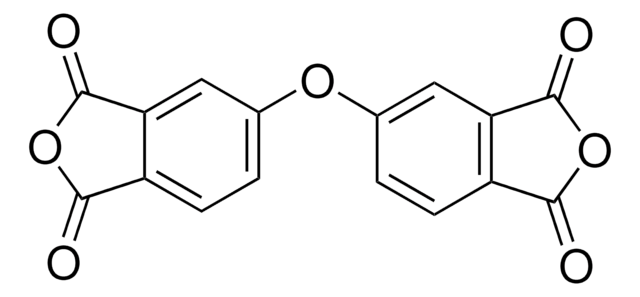
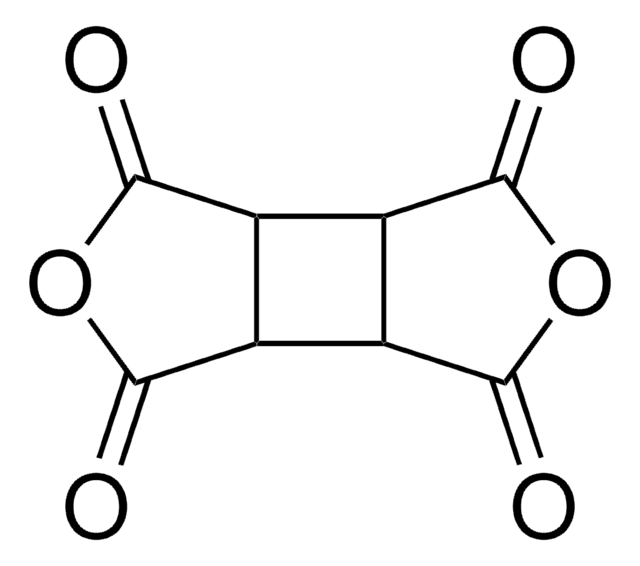


![Bicyclo[2.2.2]oct-7-ene-2,3,5,6-tetracarboxylic dianhydride 99%](/deepweb/assets/sigmaaldrich/product/structures/418/038/9edd3533-0f32-442c-8a1f-4e154e65c3b5/640/9edd3533-0f32-442c-8a1f-4e154e65c3b5.png)
